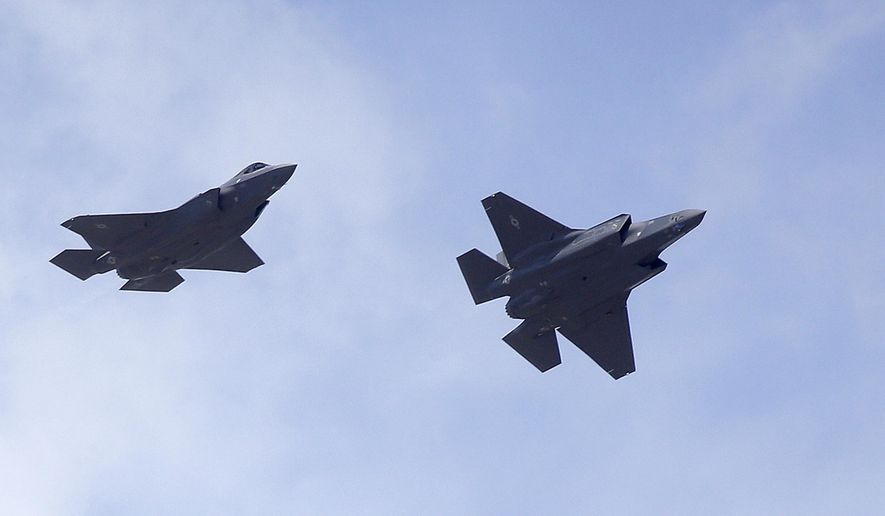The Pentagon’s most advanced jet fighter, and also the most expensive military weapons program in the department’s history, is exceeding expectations during its first major combat deployment in the Middle East.
Marine Corps aviators and maintenance crews have worked overtime in getting the service’s version of the F-35 Joint Strike Fighter ready to deal with the harsh operational environments in the Middle East and North Africa, said service Commandant Gen. Robert Neller.
“The readiness has been really good. Surprisingly good,” Gen. Neller said about the jet’s ongoing deployment with U.S. Central Command. “It didn’t just happen,” he told reporters during a Wednesday breakfast meeting in Washington, noting the time and effort put in by Marines on the ground and in the air, to keep the Corps’ F-35B variant flying and fighting.
The four-star general declined to comment on the specific operational, maintenance and logistics details Marine Corps air crews employed, to ensure the jet’s high level of readiness during its current deployment . But he did note some of the lessons learned from the jet’s current combat rotation could be applied to future deployments for the fighter.
“We will see if we will be able to develop that level of readiness,” for future F-35 integration into Marine Corps aviation units, Gen. Neller said. Dubbed the F-35B, the fighter is designed to take off and land vertically aboard U.S. Navy warships and Marine Corps air bases, specifically those located in harsh, austere environments. The F-35B is slated to replace the Corps’ fleet of AV-8B Harrier jump jets, which initially entered service in the 1960s.
Last week, an F-35B flown by aviators with Marine Fighter Attack Squadron 211 attached to the 13th Marine Expeditionary Unit successfully executed an airstrike against enemy targets in Afghanistan, in support of “ground clearance operations” in the country, according to a service statement. It was the first ever combat operations for the F-35B in the skies above southwest Asia, marking a key operational milestone for the jet’s evolution within the Pentagon’s increasingly advanced arsenal.
“The opportunity for us to be the first Navy, Marine Corps team to employ the F-35B in support of maneuver forces on the ground demonstrates one aspect of the capabilities this platform brings to the region, our allies, and our partners,” said 13th MEU Commander Col. Chandler Nelms said at the time of the strikes.
“This platform supports operations on the ground from international waters, all while enabling maritime superiority that enhances stability and security,” U.S. Naval Forces Central command chief Vice Adm. Scott Stearney said of the F-35B mission in a statement, following the Afghan airstrikes.
• Carlo Muñoz can be reached at cmunoz@washingtontimes.com.




Please read our comment policy before commenting.